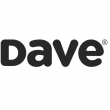Tradition FX platform cuts out HFT ‘predators’
A new FX platform built by inter-dealer broker Tradition and backed by 11 major global banks aims to remove the competitive advantage of low-latency trading in FX.
Due to launch “within weeks, not months”, ParFX is an electronic spot trading market that will offer trading in all the currency pairs supported by the CLS settlement system. The core idea is to provide open access to all users on a fair and equal basis – regardless of latency.
To make that happen, the platform uses randomisation technology – users submit their orders to a ‘green room’, which randomises the input of the trade to the matching engine for a very short period of time – milliseconds – and then hits the matching engine. The result is that there is no longer any advantage to low-latency strategies such as co-location, operating through multiple connections. In theory, even a market participant trading from Australia against another trading from London should have the same opportunity in terms of reaching the matching engine.
“Banks are spending a fortune out there to fine-tune their systems to ensure that they can compete effectively with HFT,” said Dan Marcus, global head of strategy and business development at Tradition. “Our platform removes all that. It’s an environment where everybody trades on a level playing field. It is designed for people who need to trade, rather than people who want to spoof or game the market.”
Historically, the two main FX platforms for origination have been ICAP’s EBS and Thomson Reuters. The main alternative platform is FXall – itself now owned by Thomson Reuters. But according to Marcus, the main problem for the banks is liquidity. He contends that EBS focuses primarily on the G7 currencies, while Thomson Reuters focuses on the British Commonwealth, whereas the banks want a single platform that will cover all major currencies.
The rules for trading are also quite different to most other platforms, which generally do not require market participants trading through a prime broker to reveal their identity. ParFX requires full name give up – a step that is intended to improve the trust and transparency of the platform, according to Marcus.
“The idea is crime prevention rather than punishment,” said Marcus. “On most other platforms, you can sit behind the prime broker’s disguise and trade in a way that counterparties won’t be happy with, without the counterparty identifying who they are dealing with. But on our model, if you are Morgan Stanley dealing with JP Morgan, and you have Pimco going through JP Morgan, Morgan Stanley will see that they dealt with Pimco. If you have legitimate intentions, you shouldn’t have an issue giving up your identity to the counterparty.”
Pricing structures for ParFX are also designed to be different to other FX ECNs. Marcus says that the platform will charge connections at slightly above cost just to cover the firm’s expenses, but will not make it a profit centre, nor will it offer any special fees to favoured participants. The same principle will be applied to market data.
“ECNs make a fortune from market data, and they provide different quality packages, so you can get faster or slower data depending on how much you wish to spend,” said Marcus. “We are going to provide quality market data to all participants at cost. We are not going to create any profit line out of market data. The idea is everyone’s got the same market data, so you can’t use it to get a competitive advantage.”
Marcus added that the platform’s principle of operating from one site should significantly reduce the cost of coming into the market, because participants will not have to invest in multiple boxes to connect between different markets.
According to ParFX, there are currently 20 banks testing the platform, with the aim of going live in Q1 for the platform. Third-parties will be added in Q2.
“We may not have the tightest price, but we should have the firmest price,” added Marcus. “Genuine market participants should get a much higher fill rate on ParFX than other platforms. But if you are relying purely on latency strategy, ParFX is not the place for you to do business.”












































